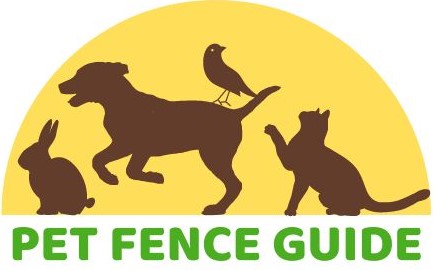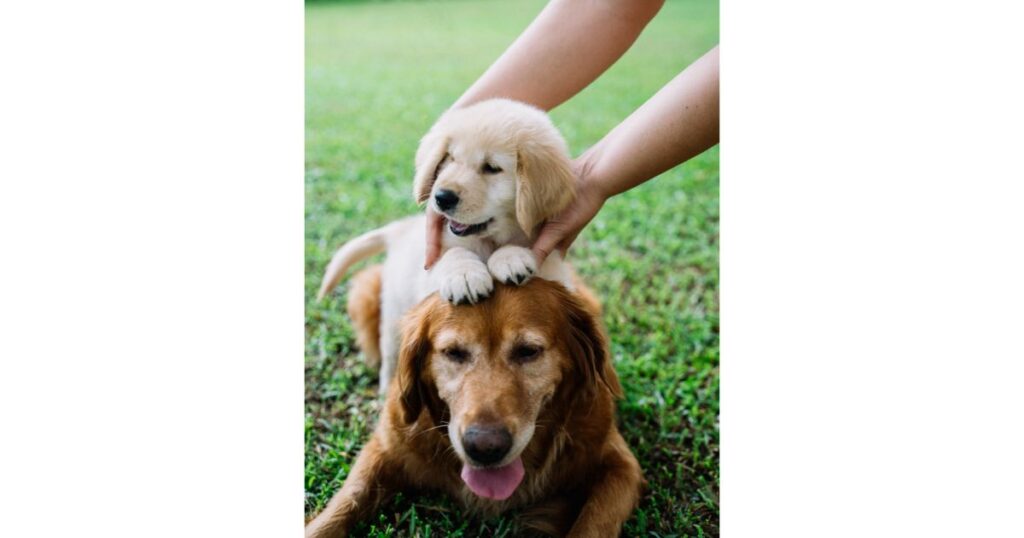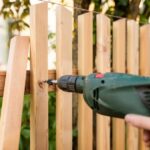How do I keep my dog outside without a fence? Dogs are natural lovers of the great outdoors, reveling in the freedom and joy that it brings. However, ensuring their safety without the confines of a fence presents a unique challenge. In this comprehensive guide, we delve into strategic approaches that guarantee your furry companion relishes their outdoor adventures without encountering potential risks. Whether your pup is a seasoned outdoor enthusiast or a tentative explorer, our expert strategies are tailored to provide a secure environment that maximizes enjoyment while minimizing risks.

I. Understanding Your Dog’s Behavior
Understanding your dog’s behavior is the cornerstone of creating a secure and enjoyable outdoor experience without a fence. It involves assessing their temperament, identifying potential escape artists, and recognizing signs of anxiety and agitation.
A. Assessing Your Dog’s Temperament
To embark on this outdoor adventure successfully, begin by understanding your dog’s unique personality. Some dogs are perfectly content soaking up the sun in a backyard, while others possess a natural inclination for exploration and may be considered escape artists. By observing their behavior in various situations, you gain valuable insights into their preferences and tendencies.
For instance, a laid-back dog may thrive in a relaxed outdoor environment, while a more adventurous canine might need additional stimulation to keep them content. This assessment forms the foundation for tailoring an outdoor strategy that aligns with your dog’s individual needs and desires.
B. Identifying Escape Artists: Dogs Prone to Wandering
Certain dog breeds have an inherent propensity for wandering. These free spirits may see the outdoor world as an expansive playground, making it crucial to recognize if your dog falls into this category. Breeds like hounds, terriers, and some sporting dogs are known for their curiosity and may be more prone to exploring beyond boundaries.
Understanding your dog’s breed characteristics is the first step in identifying potential escape artists. Once recognized, you can implement specific precautions to address their wanderlust, ensuring a secure outdoor environment.
C. Recognizing Anxiety and Agitation Signs
Dogs, like humans, can experience anxiety and agitation. Recognizing the signs of stress is paramount, especially in an outdoor setting where various stimuli may trigger such emotions. Signs of anxiety can include pacing, excessive barking, trembling, or even destructive behavior.
A happy dog is a secure dog, so it’s essential to create an outdoor space that promotes their mental well-being. Recognize the specific triggers that may cause stress for your dog and take steps to alleviate these concerns. This could involve incorporating comforting elements in the outdoor space, such as their favorite toys or a cozy bed.
Understanding and addressing your dog’s temperament, escape tendencies, and stress triggers lay the groundwork for a secure outdoor experience. The insights gained from this assessment guide the subsequent steps in crafting a tailored strategy that ensures your furry friend’s safety and happiness without the need for a traditional fence. How do I keep my dog outside without a fence? It starts with understanding their unique needs and creating an environment that caters to their individuality.
In creating a secure outdoor haven for your canine companion without the confines of a traditional fence, the focus shifts to establishing safe enclosures and considering alternative systems like dog runs or tethering. How do I keep my dog outside without a fence? It starts with these essential steps.
A. Creating a Safe Enclosure
Building a secure outdoor space requires thoughtful planning and consideration of materials that balance durability and safety. How do I keep my dog outside without a fence effectively? Start by choosing fencing materials that withstand weather elements and potential wear and tear. Options like vinyl, wood, or metal can provide a sturdy barrier while ensuring your dog’s safety within the confines of the outdoor space.
Equally important is the size of the enclosure. Ensure it is appropriately sized for your dog’s comfort and safety. An enclosure that allows your dog to move, stretch, and explore without feeling cramped is essential for their overall well-being. By combining durability with thoughtful sizing, you create a secure environment that addresses the question of how to keep your dog outside without a fence.
B. Installing a Dog Run or Tethering System
For dog owners seeking to offer their pets additional freedom, a dog run or tethering system provides a practical solution. This setup allows your dog to roam within a designated area without the constraints of a traditional fence.
Choosing the right leash and tether is crucial for the effectiveness and safety of this system. Opt for materials that withstand outdoor conditions and are appropriate for your dog’s size and strength. How do I keep my dog outside without a fence and still allow them the freedom to move? The answer lies in selecting a leash that strikes the right balance between durability and flexibility.
Moreover, ensuring enough space within the designated area is vital. Dogs need room to move, play, and exercise. How do I keep my dog outside without a fence and still address their need for physical activity? By providing adequate space within the run or tethered area, you promote a healthy and active outdoor lifestyle for your furry friend.
In conclusion, creating secure outdoor spaces for your dog without a fence involves thoughtful consideration of materials, size, and alternative systems like dog runs or tethering. How do I keep my dog outside without a fence? It’s about making informed choices that prioritize your dog’s safety and well-being. By implementing these strategies, you not only address the question at hand but also create a space where your canine companion can thrive in the great outdoors.
IV. Technology Solutions
Table of Contents
ToggleIn the pursuit of allowing our canine companions the joy of the great outdoors without traditional fencing, exploring technology solutions, landscaping techniques, and behavioral training becomes imperative. How do I keep my dog outside without a fence? Let’s delve into comprehensive strategies that integrate advanced technology, thoughtful landscaping, and effective behavioral training for a secure and enriching outdoor experience.
A. Electronic Dog Containment Systems
When pondering how to keep your dog outside without a fence, electronic dog containment systems emerge as a high-tech alternative. These systems leverage invisible fences, using radio signals to create predetermined boundaries for your furry friend. How do I keep my dog outside without a fence using electronic systems? Understanding the technology is crucial.
Electronic fences consist of a transmitter that emits a signal to a receiver collar worn by the dog. As the dog approaches the set boundary, the collar emits a warning beep. If the warning is ignored, a mild static correction encourages the dog to retreat. Investing time in training is essential to ensure your dog comprehends and respects these boundaries. This technology provides a safe and effective means of giving your dog outdoor freedom while maintaining control.
B. GPS Trackers for Added Security
Taking advantage of GPS trackers is another technological advancement for outdoor dog safety. These devices offer real-time monitoring of your dog’s location. How do I keep my dog outside without a fence and still ensure their safety? GPS trackers provide a reliable answer.
Understanding the features of GPS trackers is key. Look for devices with real-time tracking capabilities, durable construction, and suitable size options for your dog. This technology offers peace of mind by allowing you to monitor your dog’s whereabouts, especially in open outdoor spaces.
V. Landscaping for Security
A. Natural Barriers to Deter Wandering
Landscaping can be a natural and aesthetically pleasing solution to the question of how to keep your dog outside without a fence. By strategically planting hedges and bushes, you create visible boundaries that discourage wandering.
Choosing dog-friendly plants that serve as natural barriers is essential. How do I keep my dog outside without a fence and still maintain an appealing landscape? Explore options like dense shrubs and bushes that naturally create obstacles, signaling limits to your dog.
B. Creating Paths and Boundaries
Designing pathways and borders within your outdoor space helps guide your dog visually. How do I keep my dog outside without a fence and still provide structure? Pathways and borders offer a clear visual cue, helping your dog understand the limits of their territory.
Using materials like gravel or stones to demarcate paths and borders adds a tactile element to the visual guidance. Dogs are visual and tactile learners, making this landscaping strategy an effective way to create a secure outdoor environment.

VI. How do I keep my dog outside without a fence? Behavioral Training
A. Teaching Boundary Commands
Behavioral training plays a pivotal role in the quest to keep your dog outside without a fence. Training your dog to understand and respect boundaries requires patience and positive reinforcement.
Consistency is the cornerstone of successful boundary command training. How do I keep my dog outside without a fence and still ensure obedience? Regular, positive reinforcement of boundary commands during outdoor activities builds a strong understanding in your dog.
B. Addressing Separation Anxiety
Separation anxiety can be a significant factor leading to escape attempts. Addressing this anxiety is essential in ensuring your dog remains content outdoors. Gradual introductions to outdoor time and the introduction of interactive toys can ease separation anxiety.
How do I keep my dog outside without a fence and still address their emotional needs? Creating a stimulating and comforting outdoor haven reduces anxiety, making escape less likely. A content and engaged dog are less inclined to seek alternative routes to freedom.
VII. Building a Dog-Friendly Haven
A. Providing Adequate Shelter
Creating a comfortable outdoor shelter is crucial in your mission to keep your dog outside without a fence. Whether it’s a dedicated dog house or a sheltered area, the goal is to provide protection from the elements.
Investing in a shelter that considers the weather conditions in your area is vital. How do I keep my dog outside without a fence and ensure their comfort? Adequate shelter ensures your dog can enjoy the outdoors regardless of the weather.
B. Water and Feeding Stations
Setting up automatic water dispensers and strategically placing food bowls contributes to the overall well-being of your outdoor canine companion. How do I keep my dog outside without a fence and still meet their basic needs? Convenient access to water and food ensures your dog remains well-fed and hydrated, promoting a happy and healthy outdoor lifestyle.
VIII. Safety Measures
A. Dog Identification
Enhancing safety measures for outdoor dogs involves ensuring their easy identification. Microchipping, visible tags, and collars are simple yet effective ways to enhance safety. How do I keep my dog outside without a fence and still ensure they can be easily identified? Incorporating visible identification measures ensures a swift reunion in the event of an unexpected escapade.
B. Regular Vet Check-ups
Regular veterinary check-ups are crucial for the well-being of outdoor dogs. Monitoring their health and staying up-to-date on vaccinations are essential for a long and healthy life. How do I keep my dog outside without a fence and still prioritize their health? Regular vet visits provide preventive care, addressing potential health issues before they become serious.
IX. Legal Considerations
A. Local Regulations for Outdoor Dog Keeping
Understanding and adhering to local regulations is paramount when contemplating how to keep your dog outside without a fence. Leash laws and noise ordinances can significantly impact your outdoor setup.
Researching and familiarizing yourself with local regulations is essential. How do I keep my dog outside without a fence and still comply with the law? Being aware of and following local regulations ensures a harmonious relationship between your outdoor setup and community standards.
Conclusion
Ensuring your dog’s safety and happiness outdoors without a fence requires a combination of thoughtful planning, training, and understanding your dog’s needs. By implementing the strategies outlined in “How do I keep my dog outside without a fence,” you can create a secure and enjoyable outdoor environment for your furry friend. Remember, a happy and content dog makes for a wonderful outdoor companion.
Frequently Asked Questions (FAQs)
A. Can any dog be kept outside without a fence?
Not all dogs are suited for outdoor living. Factors like breed, temperament, and health should be considered.
B. How long can a dog stay outside without supervision?
The duration depends on various factors, including weather conditions, your dog’s breed, and individual needs.
C. Are electronic fences safe for all dogs?
Electronic fences can be safe when used correctly and with proper training. However, individual dog temperament plays a significant role.
D. What plants can I use for natural barriers?
Dog-friendly plants like hedges and bushes can serve as effective natural barriers.
E. How do I train my dog to respect boundaries?
Consistent training using positive reinforcement is key. Patience is crucial in helping your dog understand and follow boundaries.
F. What features should I look for in a GPS tracker?
Look for real-time tracking, durability, and a device suitable for your dog’s size. Consider water resistance for added reliability.
G. How can I create an escape-proof enclosure?
Use durable materials, secure fencing, and regularly inspect for wear and tear. Address any potential escape routes promptly.
H. Is it safe to leave food and water outside for my dog?
Automatic dispensers placed strategically are safe for providing food and water, ensuring your dog’s needs are met.
I. What steps should I take to prevent separation anxiety?
Gradual introductions, interactive toys, and creating a comfortable outdoor space can help prevent separation anxiety.
J. Are there specific dog breeds that are better suited for outdoor living?
Some breeds are more adaptable to outdoor living, but individual temperament and health are crucial considerations.
K. How often should I check my dog’s identification tags?
Regularly check your dog’s identification tags to ensure they are visible and up-to-date.
L. What legal repercussions could I face if my dog wanders off?
Depending on local regulations, you may face fines or other legal consequences if your dog violates leash or containment laws.







